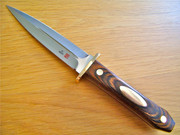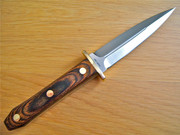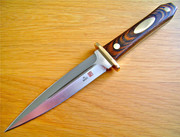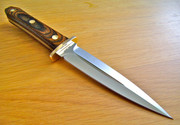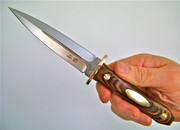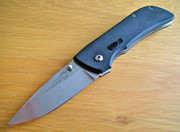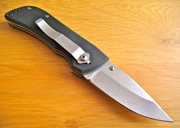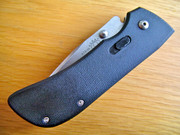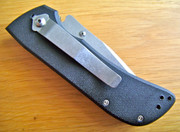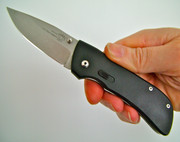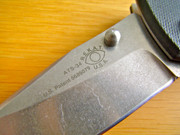The Warrior knife was designed in 1978 by Bob Taylor and Randy Wanner, both of whom had extensive training in Close Quarters Combat and between them had amassed over forty years of training and teaching.
The late Michael Echanis was also doing research on the failings of "Combat Knives".
Echanis's research and theories reinforced what they already knew, "Combat Knives" available at that time were only rehashed ideas of the Bowie, Tanto, and Dagger, which were centuries old with no major changes.
The problem with these designs was that they weakened the grip and/or provided limited motion.
The Warrior was designed as a pure combat knife used primarily in the reverse grip style, and it increased the strength of the user and added full range of motion.
The serrated secondary edge, the "soft handle" and the curve of the Warrior were unheard of at the time.
After building the first non-working prototype Mr. Taylor took the basic design and utilized a HP-3000 Main Frame computer and maximized the angles to even further enhance the Warriors capabilities.
A number of working prototype's were produced by a number of custom makers and the Warrior became a reality.
Unfortunately the Warrior design was deemed impossible to build with the manufacturing capabilities of that time, and none of the factory makers even wanted to attempt to make the Warrior.
In 1991 Al Mar, a innovator in the industry and radical designer himself, decided to attempt to manufacture the Warrior, as he figured that manufacturing technology had caught up with the design.
That's when AMK started to manufacture their version of the Taylor/Wanner design in Japan.
This is my own example, a black blade / camo handled version made by Al Mar, mint in original box:








Specs:
Overall length: 13.2 inches (33,5 cm)
Blade length: 7.1 inches (18,0 cm)
Blade thickness: 0.2 inches (5,93 mm)
Steel: AUS-6 stainless
Handle material: artificial rubber with finger grooves and grip-enhancing texture
Guard: steel (5,0 mm thick)
Butt: Steel striking pommel
Weight: 530 grams
Sheath: Leather

































































































































